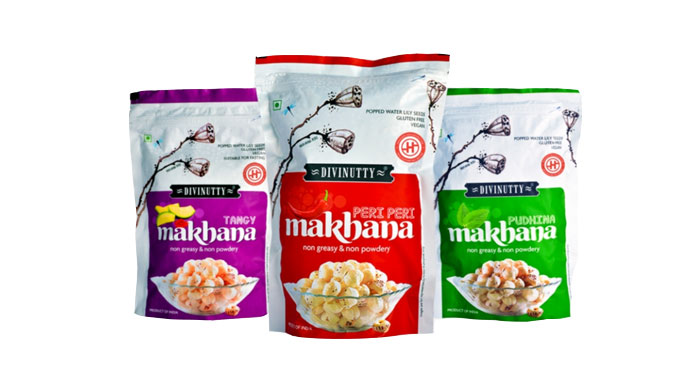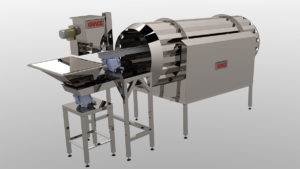The global snacking food industry is a promising and a booming arm of the FMCG category, thanks to the evolving consumer consumption patterns. According to a market survey report the global snack food market is projected to grow at a CAGR of 5.34% during the 2020 – 2025 period. The shift in demographics is fueling changes, as the fixed ‘meals thrice a day’ model seems to no longer be relevant. With the rise in busy lifestyles, millennials, school-going children, and the working class have adopted snacking attitudes and are making different snack choices based on health, convenience, brand, and trust. Consumers are intentionally looking for snacks to indulge in, to satisfy a craving, or to hold themselves up until their next meal.
The global snack food market is segmented by a different variety of snacks such as salted snacks, bakery snacks, confectionery, specialty, and frozen snacks. The bakery snacks segment possesses the highest market coverage, while the salted snacks including “potato chips, corn chips, tortilla chips, popcorn, pretzels, etc.” are expected to have the highest market growth during 2020 to 2025.
The higher disposable incomes, as a result of the growing urbanization and increasing preference for snack foods variety like “corn puffs, kurkure, fried extruded snacks, pellets chips, potato chips, banana chips, namkeen, fried matar (green peas), popcorn, caramel popcorn, tortilla chips, corn tortilla chips”, and others as per regional and local tastes, have triggered the growth of the snacks industry. Globally, the number of independent working women, double-income families, and nuclear families are increasing. This demographic change increases the demand for convenience snack food by many folds and so the snack food business has become the most preferred in the food industry. Thus, the business potential of snacks food in the near future is tremendous because of these reasons:
- Growing urbanization worldwide
- Fast movement toward globalization
- Increase in single households
- Young Population in Developing Countries
- Increase in spending power of the middle class
- Busier lifestyles of active class
1. Growing urbanization is one of the reasons for the rise of the snacks food business

Urbanization, associated with economic development and income growth, has already occurred in developed countries and continuing strongly in developing countries. Snack food demand is projected to increase many folds if it accounts for urbanization.
Recent research has suggested that other demographic variables also determine the rate and composition of changes in food consumption. Among the most important is the shift of much of the world’s population from a rural existence to urban life centered around more economic occupations.
Urbanization can lead to structural changes in food consumption patterns for several reasons.
First, given different lifestyles of urban and rural residents differ. Second, food availability and an individual’s ability to purchase food differ in urban and rural areas.
Finally, urban areas are centers of economic opportunity and have a greater percentage of women working outside the home. Studies have indicated that increased cost of working women’s time increases the demand for non-traditional ‘snack food’ in many countries.
2. Fast movement toward globalization
The urban areas typically offer residents a wider choice of dietary patterns from foreign cultures than do rural areas. Some argue that as countries become more developed, given the current trend towards globalization, there is a tendency for the dietary structure to become increasingly similar across similarly developed countries. This is facilitated by multinational food processing and distribution industries that operate globally as well as changing demographics within the countries. For example, the presence of U.S. style snack food in other countries has greatly affected food consumption in these countries.
3. Increase in Single Households
A single type of household is growing in both developed and developing countries mainly in the urban population. As in America singles comprised 28 percent of all households in 2010, up from 17 percent in 1970. In some urban areas, the numbers are even higher as more than 40 percent of households have just one occupant in cities such as Atlanta, Washington, and Seattle. In Manhattan, nearly 50 percent of households consist of a single occupant.
Thus, Americans are now almost a household majority “single” nation. And single households are fueling the economy. They spend more discretionary dollars than their married counterparts. Their average per capita annual expenditure was $34,471 in 2010, according to the federal Consumer Expenditure survey, compared with $28,017 for married individuals without kids and $23,179 per person in the highest-spending families with children.
According to the report of Euromonitor, singles household buying power is beginning to increase many fold for snacks food such as corn puffs, kurkure, fried extruded snacks, pellets chips, potato chips, banana chips, namkeen, fried matar (green peas), popcorn, caramel popcorn, tortilla chips, corn tortilla chips. Supporting it Nestlé research shows that 90 percent of its Lean Cuisine meals are eaten alone and failed to sell meals that could be shared by two people.
Thus the rising number of single-person households presents opportunities for the food industry and mainly snack food manufacturers.
4. Young Population in Developing Countries

As the younger and rapidly urbanizing population in developing countries increasingly embrace Western food habits, the growth and composition of global food consumption and trade will continue to undergo changes.
The young population is comprised of Millennials (Born 1981-1997) and Generation Z (Born 1997-2014), the most digital and economic force of today’s world for every and any consumer products mainly FMCG and snacks in the food industry.
According to NPD Group market report, Generation Z has grown up prioritizing the flavor and function of a particular snack food rather than the brand of the product. A large percentage of Gen-Z has been educated and raised to put a greater emphasis on the quality of snack products, such as whether it is clean, fresh, or nutritionally fit for their health. Thus, when selecting a particular snack product they always look for functionality, portability, added nutrients, and health benefits.
5. Increase in Spending Power of the Middle Class
Increased urban economic activity and income among the middle class during the last two decades have led to changes in global food consumption patterns. Often the best available measure of food consumption is the purchasing power of the middle class of consumers for snack food available in a market. At the middle and highest income levels, per capita consumption of traditional food decreased, while that of fruit and snack food increased substantially.
However, data indicate that within the rural sector, increased availability and greater purchasing power have led to definite shifts toward snacks and healthy ready-to-eat and cook foods.
Similarly, with changes in availability and greater disposable income, individual consumers tend to shift cereal consumption away to increased consumption of a different variety of snack foods and other packaged single dose easy to digest food items.
6. Busier Lifestyles of Active Class
Globally, the snack food market is in an expansion mode due to the changing eating habits of the majority of consumers. In general, regular hectic lifestyles have made consumers opt more for smaller snack-based meals rather than traditional time-consuming lunches and dinners.
Fast and busy lifestyles have driven global consumers away from traditional thrice-a-day meals toward quick foods, helping to fuel healthy growth in the snack foods market worldwide.
The GIA’s “Snack Foods: A Global Strategic Business Report”, said that the global economic crisis of 2008-9 had little impact on growth in the snack food sector, which continued to expand during the said period, although at a slower rate. While during COVID-19 the sale of snack foods has increased many fold in-spite of workless life throughout the world.
Thus, busy lifestyles in emerging economies have fueled the discovery of food products that can be quickly prepared, conveniently carried, and easily consumed, thus driving the market for snack food manufacturing significantly. This has opened the door for startups in the sector globally.
Conclusion
Economic activity among women, increased social mobility, different level of working life and family nutrition, increasing share of young population, a growing number of one-person and two-person households, improved social wealth in industrialized countries and the urban population that enables the acquisition of more expensive food products, increasing share of food consumed outside the home, and finally growing popularity of so-called snacks and increased interest in the products coming from other cultures have developed snack food sector for varieties like “corn puffs, kurkure, fried extruded snacks, pellets chips, potato chips, banana chips, namkeen, fried matar (green peas), popcorn, caramel popcorn, tortilla chips, corn tortilla chips, and other types” in the food industry. For these reasons, the snack food business is the most preferred in both developed and developing economies.




